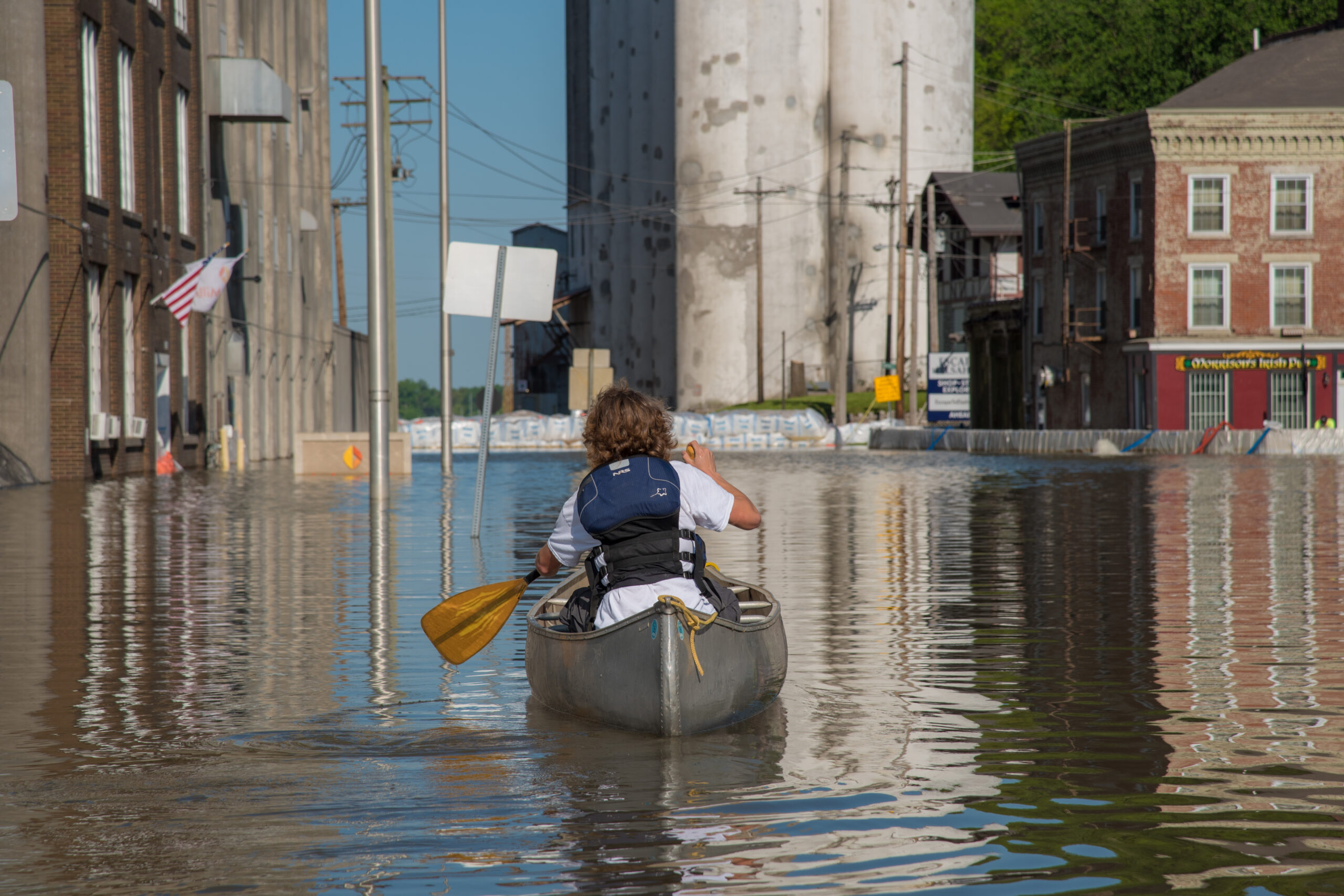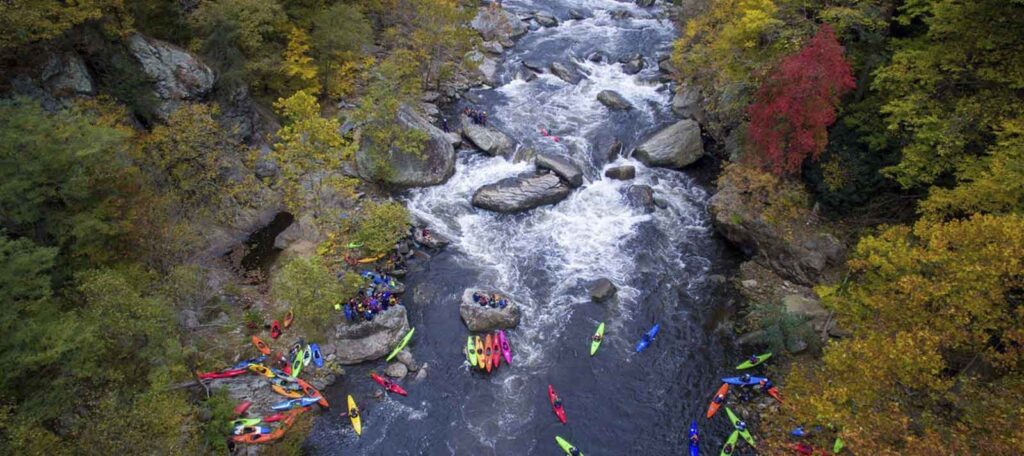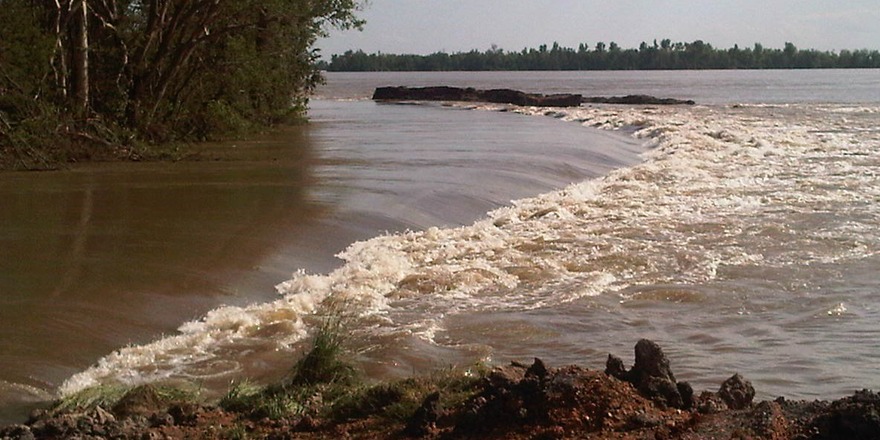10 Facts About Flooding

1 – FLOODS ARE THE MOST COMMON NATURAL HAZARDS IN THE UNITED STATES
In terms of number of lives lost and property damage, flooding is the most common natural hazard. Floods can occur at any time of the year, in any part of the country, and at any time of the day or night. While heavy precipitation is the common cause of flooding, hurricanes, winter storms and snowmelt are common, but often overlooked, causes of flooding.
2 – Floodplains provide roughly 25 percent of all land-based ecosystem service benefits yet they represent just 2 percent of Earth’s land surface
Floodplains are the low lying areas that surround rivers and other water bodies naturally flood on a frequent basis. Naturally frequent flooding makes floodplains the “lifeblood” to surrounding areas.
They provide clean water and wildlife habitat among many other benefits including one of the most visible functions, the ability to store large volumes of flood water and slowly release these waters over time.
3 – Wetlands in the U.S. save more than $30 billion in annual flood damage repair costs
Wetlands act as natural sponges, storing and slowly releasing floodwaters after peak flood flows have passed. A single acre of wetland, saturated to a depth of one foot, will retain 330,000 gallons of water – enough to flood thirteen average-sized homes thigh-deep.
4 – Over the past century, we have experienced more intense and frequent storms
Over the last 50 years, Americans have seen a 20% increase in the heaviest downpours. With a changing climate, we know that the size of the nation’s floodplains will grow by 40 to 45% over the next 90 years, putting more people in harm’s way.
5 – Damages from flood losses have increased to an average $10 billion per year
In the first decade of the new millennium, extreme rainfall events combined with changes in land use have resulted in an increase in floods and an increase in annual average flood losses from $6 billion to $10 billion despite the billions of dollars invested in flood control.

Let's Stay In Touch!
We’re hard at work for rivers and clean water. Sign up to get the most important news affecting your water and rivers delivered right to your inbox.
6 – In 2011 alone, there were 58 Federal flood disaster declarations, costing over $8 billion and caused 113 deaths, both exceeded the 30–year averages.
A homeowner with a 30-year mortgage in a 100-year flood area has a 1 in 4 chance that such a flood will occur and more than double the chance of being damaged by a flood than by a fire.
Floods can happen everywhere, it just depends on whether the risk is high, medium, or low: people outside of “high-risk” areas (or the “100-year” floodplain) actually file over 20% of the flood insurance claims and receive one-third of disaster assistance for flooding.
7 – Roughly 17% of all the urban land in the United States is located in the “100-year” or high risk flood zone
If you live in a high-risk area and you have a federally backed mortgage, you must buy flood insurance. While flood insurance costs vary, flood insurance averages $600 a year. However, if your community participates in FEMA’s voluntary Community Rating System (CRS), you can receive up to 45% off your insurance premium.
8 – Over the course of a 30 year mortgage, homeowners in the 100-year floodplain have a 1 in 4 chance or greater of being flooded – twice the probability of fire damage
Floods are not limited to the 100-year floodplain and 100 year floods can happen more frequently than once every century. Over 20% of the flood insurance claims and one-third of all flood disaster assistance is for flood damage outside the 100-year floodplain. The concept of a 100-year flood is a statistical projection that refers to a flood event that has a 1 percent probability of occurring each and every year. As the climate changes, the size and area subject to the 100-year flood will increase.
9 – Flood mitigation practices that reduce the loss of life and damages to properties provide $5 in benefits for every dollar invested
When homeowners take steps to protect themselves and to reduce the impacts of flooding through mitigation practices such as elevating or flood-proofing their homes, moving out of harm’s way, and investing in “natural defenses” they can save themselves and taxpayer’s money because it’s less expensive to prepare for a flood than it is to keep cleaning up afterwards.
10 – Levees can and do fail often with catastrophic consequences

An estimated 100,000 miles of levees crisscross the nation. However, there is no definitive record of the exact number or the condition of those levees.
We do know that over 40 percent of the U.S. population lives in counties with levees and that many of these were designed decades ago for agricultural purposes but now have homes and businesses behind them.
The good news is there are proven methods to restore and reconnect our rivers. Setting levees back or otherwise modifying levees allows the floodplain to store more water naturally, keep people safe, and provide other benefits such as clean water and wildlife habitat.
